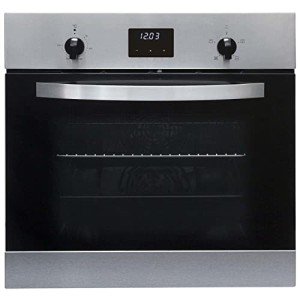The Comprehensive Guide to Sales Ovens: Understanding Their Importance, Types, and Best Practices
Sales ovens, a category of industrial cooking devices, are essential gamers in the cooking and foodservice industry. simply click the up coming website , designed to prepare food in large quantities efficiently, are essential in restaurants, catering services, and other food establishments. This post explores the significance of sales ovens, their types, and best practices for selecting and using them efficiently.
What Are Sales Ovens?
Sales ovens, broadly defined, are cooking devices used primarily in industrial cooking areas to cook, bake, or heat different food products at scale. Their design allows them to manage greater volume cooking compared to basic residential ovens. Provided the nature of food service, sales ovens frequently include advanced technologies that promote speed, effectiveness, and even cooking.
Importance of Sales Ovens in the Food Industry
Sales ovens play a critical function in food production for numerous factors:
- Efficiency: Sales ovens can prepare food quicker and evenly than conventional ovens, allowing chefs to prepare meals in less time.
- Consistency: With exact temperature level controls, sales ovens ensure that the food is prepared equally each time, keeping quality throughout thousands of servings.
- Versatility: Many sales ovens can handle numerous cooking techniques including baking, roasting, broiling, and even steaming, making them suitable for varied menus.
- Energy Savings: Modern sales ovens are typically created to be energy-efficient, decreasing functional expenses for companies.
Kinds Of Sales Ovens
The market offers a variety of sales ovens, each suited for specific cooking requirements and kinds of food. Here are the most common types:
| Type of Oven | Description | Best For |
|---|---|---|
| Convection Ovens | Utilize a fan to distribute hot air, making sure even cooking. | Baking and roasting products. |
| Combi-Ovens | A mix of convection and steam cooking, offering versatility in cooking methods. | Diverse menus needing steaming and baking. |
| Conveyor Ovens | Utilize a moving belt to continuously cook food, ideal for high-volume operations. | Junk food and pizza. |
| Deck Ovens | Feature different compartments (decks) that can be separately controlled, offering high performance. | Craftsmen bread and pastries. |
| Rotisserie Ovens | Developed to slowly roast meat on a spit, providing tender and juicy results. | Roasted meats. |
Picking the Right Sales Oven
Picking the proper sales oven for a particular service requires consideration of numerous elements:
- Volume Needs: Assess the volume of food that needs to be prepared. Greater volume means opting for conveyor or combi-ovens.
- Menu Diversity: Understanding what kind of meals will be cooked can guide the choice procedure. For instance, a pastry shop might require a deck oven, while a diner might gain from a convection oven.
- Area Availability: Measure kitchen space to ensure the ovens fit properly and have required ventilation.
- Spending plan: Commercial ovens can differ significantly in cost, so develop a budget plan that thinks about long-term functional cost savings.
- Energy Efficiency: Opt for ovens that have energy scores to keep utility expenses manageable.
Best Practices for Using Sales Ovens
Effectively operating a sales oven includes more than basic usage. Here are some best practices to keep in mind:
- Regular Maintenance: Schedule routine maintenance to clean and inspect the functionality of the oven. This ensures durability and effectiveness.
- Pre-heating: Always preheat the oven to the wanted temperature level before putting food inside for constant cooking results.
- Use Thermometers: For precision, utilize an oven thermometer to guarantee that temperature levels stay constant, specifically for baking.
- Follow Cooking Times: Adhere to suggested cooking times based upon the kind of food being prepared. Modifications might be needed for different ovens.
- Prevent Overcrowding: Ensure sufficient area around food products in the oven to permit appropriate air blood circulation.
The Future of Sales Ovens
As technology advances, so do the capabilities of sales ovens. Developments such as smart innovation, energy-efficient designs, and improved safety features are ending up being more prominent. These developments promise to enhance cooking performance while likewise satisfying sustainability objectives.
FAQs about Sales Ovens
Q1: How do I tidy my sales oven?
A: Regular cleaning includes getting rid of any food particles, cleaning down surface areas with non-corrosive cleaners, and following particular cleansing suggestions from the maker.
Q2: What's the lifespan of a business oven?
A: Typically, a well-maintained business oven can last anywhere from 10 to 20 years, depending upon usage and upkeep.
Q3: Can sales ovens be utilized for baking?
A: Yes, lots of types of sales ovens, specifically convection and deck ovens, are specifically designed for baking a series of products.
Q4: Are there energy-efficient options for sales ovens?
A: Yes, several producers use energy-efficient designs that minimize energy consumption without sacrificing efficiency.
Q5: How frequently should I carry out upkeep on my sales oven?
A: It's advisable to carry out regular maintenance checks each month or quarter, depending on use levels. Additionally, a comprehensive assessment must take place at least every year.
Sales ovens are essential in the contemporary cooking landscape. Their capability to cook big quantities of food effectively makes them essential for restaurants, catering services, and other food facilities. By understanding the different types, picking the best oven, and sticking to best practices, food service businesses can enhance their cooking processes, boost their offerings, and eventually delight their customers with outstanding cooking developments.

